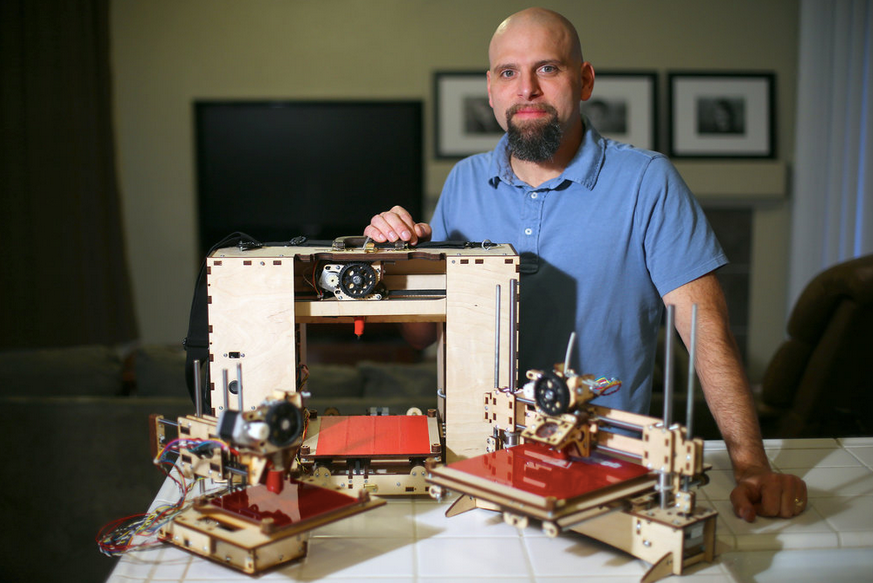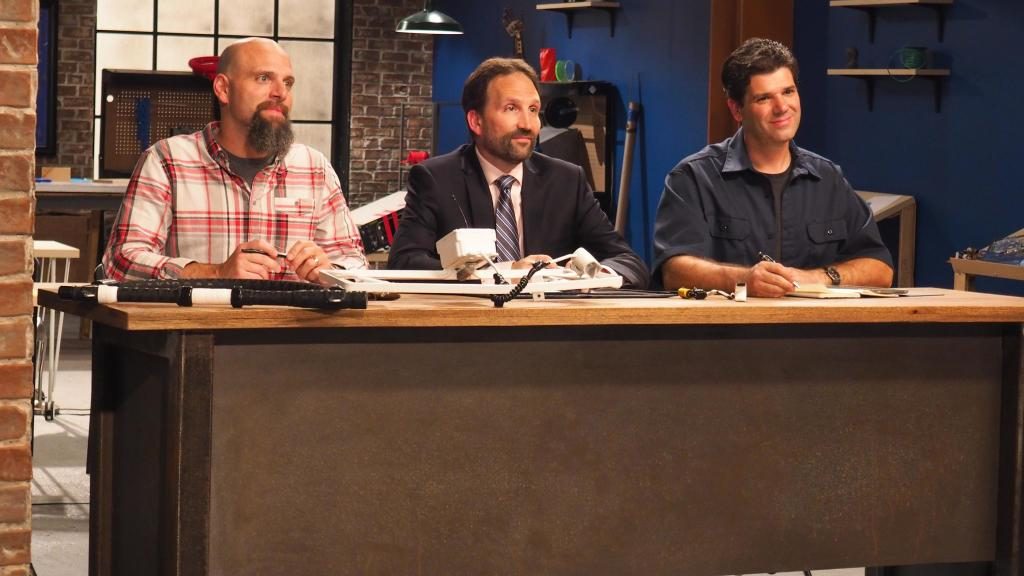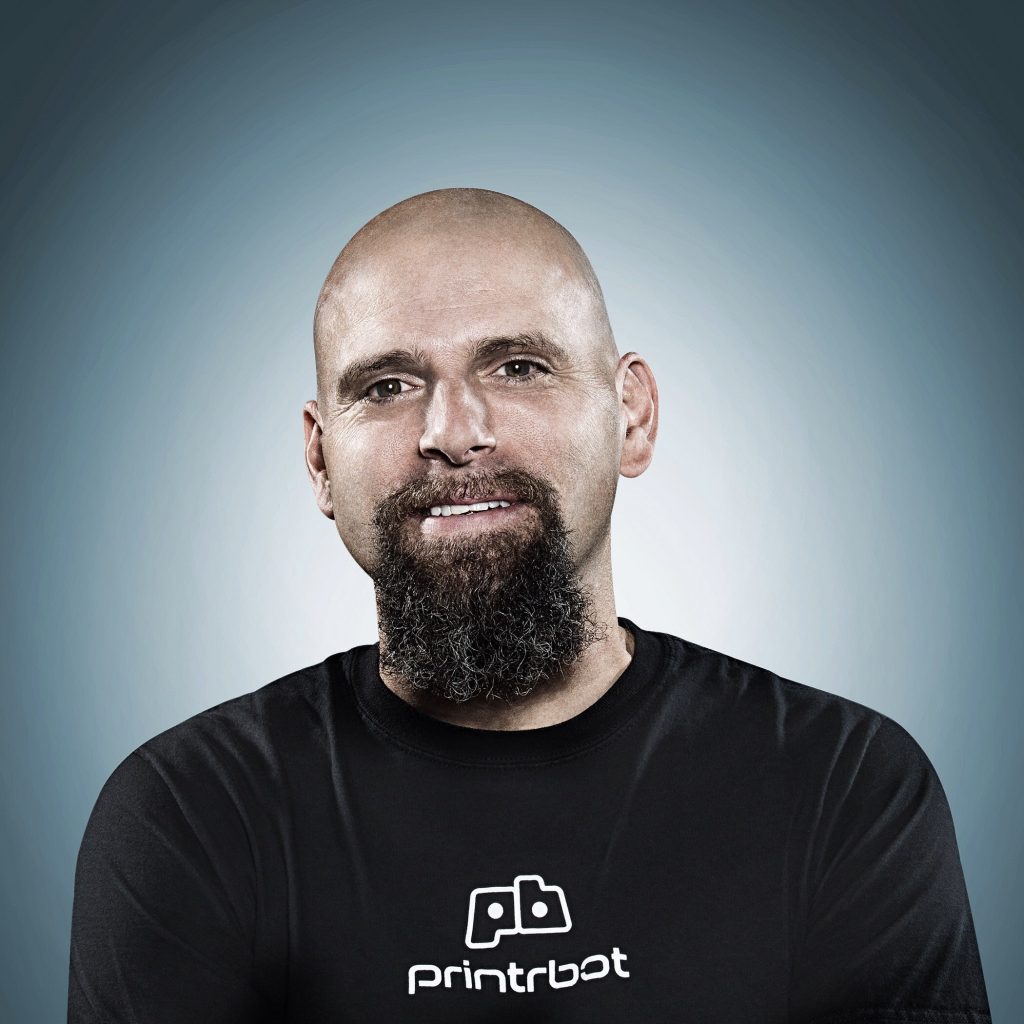Our series to celebrate the 10th Anniversary of the RepRap project continues this week with insights from more early pioneers.
Occasionally there is confusion around the term Open Source, in particular as to whether it is incompatible with business. In this article 3D Printing Industry interviews the founder of an American company that was inspired by the RepRap project and continues to make Open Source 3D printers.
Brook Drumm is the founder and CEO of Printrbot. Headquartered in California, Printrbot launched a 2011 Kickstarter campaign that would eventually result in pledges of $830,827.
Printrbot now sells a range of 3D printers and the components and consumables used in 3D printing. Brook Drumm has also helped develop a conveyor belt 3D printer, the Printrbelt. Brook continues to be actively involved in the 3D printing and Maker community and in this article reflects on what’s next for desktop 3D printing and Open Source.

Michael Petch: How would you describe the importance of the RepRap project?
Brook Drumm: “You can make a machine that can make a copy of itself.” To this day, when I explain that to people, it blows their mind. A burst of wonder and happy realization spreads across their face. That expression of joy often gives way to confusion, worry and even fear. I just keep smiling and wait for it. The obvious connection with the Terminator movie follows, along with it’s tired jokes of robots taking over the world. It’s often a great conversation starter to explain how the world changed when the first RepRap was born.
I absolutely believe that the world DID change. The impact WAS huge. But the TRUE vision of RepRap was never realized: free 3D printers that benefit everyone.
But what happened along the way still changed the world. Instead, we now have *affordable* 3D printers that benefit *many*. And that’s not only cool for us geeks, it’s incredible.
Thousands and thousands of people across the globe have acquired a new super-power: they can make a huge variety of useful, physical items at home– cheaply, safely and fairly quickly. That’s a game changer!

Michael Petch: How does RepRap relate to you now?
Since Printrbot makes Open Source 3D printers, I have always championed the RepRap movement. It still peaks the interest of some makers, students, teachers and hobbyists. But I believe the race to the bottom (price), won largely by Chinese knock-offs, was a loss for idealists, purists, and even capitalists.
A key part of the puzzle in the rapid spread of 3D printers across the globe is the rise of open source hardware businesses, like us, that sell inexpensive 3D printer kits. We were able to scale up faster than organic, grassroots growth alone could achieve. The downside was that our innovative designs were also being used by companies with even bigger distribution channels and much deeper pockets.
Our success, and the media hype that followed, created a perfect environment for opportunists who wanted to capitalize on the trend. In the end, companies that ignored the open source licenses, couldn’t care less about the spirit of the RepRap movement, and contributed zero back to the community actually ended up hurting the whole ecosystem by making terrible products. This sea-change has had a very negative effect on the movement and the industry as a whole. It has affected my company too.
Today, I fear, the majority of people who don’t own a 3D printer dismiss it as an irrelevant hobby, a toy for children, or at worst, a passing fad. Obviously, we disagree, but it will take some time to recover from the damage that has occurred.
While I still happily engage with RepRappers, as I call them, I see little to no movement toward the lofty goal of “free” printers. And we all still scratch our heads thinking about that killer app that will benefit “everyone”.
These goals have given way to tough, practical questions like :
“Can a privately owned, Open Source, 3D printer company survive?”
“How do we market our products to such a splintered audience in so many niches?”
And “Does the open source model even work in today’s market?”

Michael Petch: What is your perspective on the state of Open Source in 2018 and is there still a need for OS projects?
Brook Drumm: On one hand, I know the wonderful companies and individuals that really care about and contribute to Open Source projects. It matters to us. Great things are still happening. To quote Monty Python, we are “not dead yet!”
Many are either ignoring the problems that have grown alongside the movement. Or maybe those problems don’t affect them, or they don’t care. After all, most are not running a business and they happily reap the rewards of open source. There is no risk for them. I find it hard to believe that they don’t know or see the problems. I think for businesses, specifically, it is difficult to find a path where Open Source and capitalism happily meet. If you narrow your focus to purely open source HARDWARE companies, it becomes more difficult, still.
I have found, from the beginning of Printrbot in 2011, that Open Source was synonymous with disorganization. I was trying to herd cats while finding the needles in the haystacks of ideas to chart Printrbot’s course. The 2nd law of thermodynamics is called to mind… things seem to tend toward disorder. Not much has changed since then.
No one agrees on what the definitive hardware design should look like. Firmware is all over the map. Software too. There is little common ground and so very little that is neutral territory between two open source companies. We all suffer from the fear of helping the competitor that may someday crush us.
It’s all very odd. You would be surprised how competitive, egotistical, selfish, even greedy some of the most beloved Open Source companies and individuals are… at my worst, I am guilty of all of the above, although a more palatable list would read: strategic, vocal, self-protective, financially wise. Leaders need some of these qualities to stay alive commercially. But these qualities among leaders have also stunted the growth of Open Source – there is NO QUESTION in my mind. Sadly, the idealistic vision of RepRap has met a variety of forces competing against it… losing focus, losing momentum, but still making an impact on the world, none the less.
There is still a need for OS projects, of course. The educational benefits of 3D printing alone are enough of a reason for me to stay engaged. Saving the time that would otherwise be spent reinventing wheels, or waiting on older prototyping methods, are also good reasons to leverage open source software and hardware alike.
But, I think more importantly, there are problems in the world that can be solved by RepRap, by “freely available” 3D printing! Sadly, I’ve seen up close how non-profit organizations can even fall into competing for position and corporate dollars to the detriment of the cause itself. I HATE this fact. My hope is that these negative forces will be overcome, and perhaps it’s just a matter of time until victories abound.

Michael Petch: What are some of the key developments in 3D printing during the past decade?
Brook Drumm: Some will say price point, software advances, hardware milestones, etc… I don’t think any of this matters to the world. 3D printing isn’t the point. RepRap isn’t the point.
To repurpose a quote I heard recently, “This isn’t THE THING. It’s the thing that gets you to THE THING!” I love that. What matters is what we do with this technology. Ultimately, I believe this movement is about people positively impacting other people. THAT is the thing. In fact, it’s many things. Things small and large, all significant.
So what are the key developments in the last decade?
People are making again. Kids are designing things. Schools are teaching trades again. Small businesses are popping up around digital manufacturing. Availability of tools is at an all-time high. Innovation continues. These are indirect results, but all because people are leveraging new tools to teach, inspire, express and create. It is an exciting time to be alive.
Michael Petch: What is 3D printing currently missing, what would you like to see?
Brook Drumm: I’ll spare you any technical list of requirements leading to nirvana.
What we need is to get some wins under our belt again. To band together and conquer some big problems, profit and loss spreadsheets be damned! What we need is to roll up our sleeves and re-capture the imagination of a world currently jaded and tone-deaf to the mention of 3D printing.
I believe the community faces a decision, a fork in the road. Their choices?
Take the Blue Pill and pat yourself on the back for participating in this movement to date… it will die off completely soon, the term RepRap will spiral into obscurity as we accept that large companies are the ones who know best and can best supply us with the tools we need to make things… sure, these tools are fraught with complicated licenses and caveats. But the trains run on time. The fares are cheap enough and after all, I can still show people what I did on Facebook, instagram and Twitter. Yay!
Take the Red Pill. Unite to decide on a few important goals and attack them with the full force and skills of this diverse community of makers. With no regard as to who gets the credit, who sells what product, what implications it has for existing businesses, who it pisses off, how hard it will be, how much time it will take, what patents we will have to navigate around, what threats of lawsuits loom ahead, [insert your fears and excuses here]. It’s time to let the thing get us to THE THING.
Michael Petch: Do you have any other RepRap thoughts you’d like to share?
I think I’ve already overshared. 🙂
On a personal note, I have people come up to me all the time and tell me how I’ve changed their life. It’s embarrassing, frankly, because they are wrong. I didn’t do it. They did it. Yes, I had some small contribution, or at least I played a character in their story and that has been a dream come true for me. But, indeed, I can trace it back to Adrian and many others. None of us deserve all the credit. We all contributed bits here and there, yes, but I hope I speak for all of us when I say: we are all glad to participate in the RepRap story and feel fortunate to have been alive during one of those pivotal periods of time in the world’s history.. where new abilities were possible for an individual and amazing things followed.
I think good things are still to come, and I, personally, am so grateful for Adrian Bowyer and friends. I have to believe it warms his heart to think about the folks out there across the world whose stories took a turn for the better about 10 years ago, when RepRap was born.

The RepRap 10th Anniversary series continues
3D Printing Industry will continue with more insights and reflections from the individuals and enterprises involved with the early days of the RepRap project. You can read the articles already published to mark the 10th Anniversary of RepRap here.
Make sure you don’t miss the upcoming interviews with the RepRap pioneers, subscribe to the 3D Printing Industry newsletter and follow us on social media.
Want to work in additive manufacturing or looking for a 3D printing job? Sign up for our free jobs service now.
Featured image shows Brook Drumm founder and CEO of Printrbot. Photo via Printrbot.



